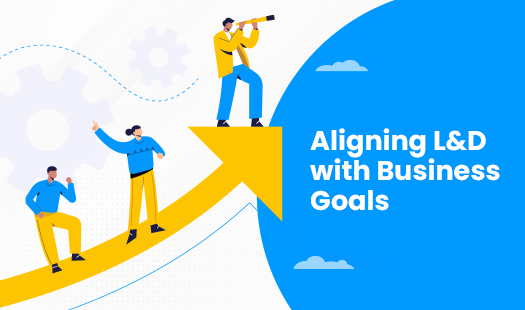
In the dynamic business landscape of today, the alignment between Learning and Development (L&D) initiatives and organizational objectives is a crucial factor for sustained growth. This synergy requires a purposeful and comprehensive approach. Crafting a cohesive framework that amalgamates the strengths of various strategies becomes pivotal in aligning L&D programs with the trajectory of organizational achievements.
1. Thorough Needs Analysis and Strategic Mapping:
Start with a comprehensive needs analysis involving stakeholders from diverse departments and hierarchical levels. For instance, a global manufacturing firm eyeing technological advancements may identify a need for upskilling employees in data analytics. Aligning this need with the business objective of process optimization sets the stage for targeted training programs in data analytics and process improvement methodologies.
Real-world Example: A multinational logistics company identifies a gap in supply chain optimization expertise among its workforce. The L&D team orchestrates tailored workshops, inviting industry experts to train employees in the latest supply chain management software and techniques. This directly aligns with the business objective of enhancing operational efficiency.
2. Cultivate Collaborative Culture and Seamless Integration:
Foster a collaborative environment by establishing open channels for communication and knowledge sharing between L&D teams and department heads. For instance, a technology company aiming to encourage innovation might institute regular cross-departmental brainstorming sessions or innovation labs. Such initiatives encourage diverse perspectives and practical application of new knowledge within the organizational culture.
Real-world Example: A software development firm initiates ‘Innovation Fridays,’ allowing employees to dedicate a day to work on passion projects outside their regular roles. This initiative not only encourages cross-functional collaboration but also contributes to a culture of continuous learning and creativity.
3. Data-Driven Decision Making and Adaptive Learning Design:
Utilize data analytics to tailor L&D initiatives to specific organizational needs. For instance, a retail chain analyzing customer feedback might identify a need for enhanced customer service skills. This prompts the design of scenario-based training modules focusing on various customer interactions, adapted to different employee roles within the company.
Real-world Example: A hospitality group tracks customer feedback and identifies a demand for enhanced cultural awareness among their front-line staff. They develop a cultural sensitivity training program tailored to each region’s specific customs and customer expectations, leading to improved guest satisfaction.
4. Rigorous Impact Measurement and Continuous Adaptation:
Measure the impact of initiatives by tracking relevant metrics tied to business objectives. For example, a tech startup might implement coding boot camps and measure the impact through the successful completion of projects or the number of new product ideas generated by the trained teams. Continuously adapt the program based on the results to ensure alignment with evolving business objectives.
Real-world Example: A software development company introduces a ‘Hackathon Impact’ metric, measuring the number of prototypes developed during hackathons that progressed to full-scale products. This helps in gauging the effectiveness of their coding initiatives and optimizing future hackathons for better outcomes.
5. Ongoing Review, Refinement, and Evolution:
Continually refine strategies by seeking regular feedback from employees and stakeholders. For instance, a manufacturing company might conduct quarterly surveys to assess employee satisfaction with training programs. This feedback loop allows for real-time adjustments, ensuring alignment with evolving business objectives.
Real-world Example: An automotive manufacturing company conducts post-training focus groups to gather qualitative feedback on leadership development programs. This input guides subsequent program enhancements, ensuring their relevance and resonance with the changing dynamics within the company.
In the end, the alignment between L&D initiatives and organizational goals doesn’t just drive professional development; it propels the entire organization towards a future where adaptability and growth are not just aspirations but ingrained virtues fostering enduring success.

